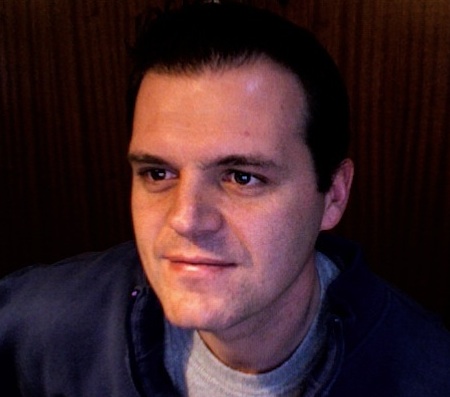Why you're unhappy, and what you can do about it!
Here's another post on the brain... Please don't give up reading this as soon as you see that it's about the brain!! In this post I have attempted to share some explanation for why you do some of the things you do, and why you feel some of the things you feel. And, I hope that when you understand how powerful your brain is in shaping your conscious mind that you will begin to take deliberate measures to manage your mind. It is possible, and it will make your life a lot better!
The inspiration for this post came from a hilarious skit by Bob Newhart... In the video Bob Newhart acts something like a Rogerian Gestalt therapist with a woman who suffers from claustrophobia. Each time she expresses her fear he simply yells at her to 'STOP IT' (i.e., stop being afraid). Of course that is not good psychotherapy practise! But, it did stimulate some thought about whether one is able to understand and control one's reactions to experiences and internal struggles that one may face?
I think you can (to some extent at least!)
The human brain is the most complex of all of the organs of the human person. We understand very little about its actual functioning, although we are able to understand some of the more basic electrical and chemical processes that can be related to certain actions and feelings. In some senses we're able to understand the processes of the brain without truly have a handle on the brain itself.
The simplest explanation for explaining how the brain functions is to say that it is an organ that is designed to ensure survival. The brain is a in fact a fairly primitive organ that has evolved in complexity throughout the ages - yet at its very base it has the same basic purpose - ensuring that you (and we as a species) continue to survive. In order to to this the brain has three basic functions.
1) The brain receives input from the senses (we see things, hear things, feel things, smell things and taste things).
2) The brain processes the input that it gets from the senses and then decides what to do with it.
3) The brain sends messages and instructions to different parts of the body to respond to the exogenous and endogenous inputs it has received.
The receptive part of the brain is a complex science all of its own. Each of the senses is routed primarily to a certain area of the brain where it fires up the dendrites and we can measure electromagnetic activity in that particular area (or at least we can measure a dominance of magnetic activity in a particular area). For example sight is directly connected to the lower brain - interestingly the eyes are the only part of the brain that is visible to other persons! The nerves in the eyes are directly connected to the brain and in fact form a direct primitive function of the brain. The right eye is connected to the left hemisphere and vice versa. I chose vision as the example for input stimuli since vision takes up to 1/3 to 1/2 of brain function. When I share the few points about the primal functioning of the brain it will become clear why this is the case. However, it will suffice to say at this point that vision is not a function of the eyes, rather it is fundamentally a function of the brain!
The simplest way to explain this is to say that we don't 'see' everything that our eyes take in. There is common experiment that brain science lecturers us to show this to their students. It is known as the pictorial superiority effect. The students are shown a video of a group of persons standing in a circle throwing a ball to one another. They are then asked to count the number of times the ball is passed between two (or more) of the participants. What happens in the brain of the observer is that their reticular activation sensor is activated to only process the persons they're watching and the movement of the ball. In the video a person dressed in a guerilla suit walks into frame, walks between the persons and then moves out of frame. When one asks the viewers what they saw almost none of them will report seeing the guerilla! Surely a guerilla among a group of people playing with a ball should be something noticeable? Well, in this case it is not. The brain has 'tuned out' that particular stimulus input because it either does not fit the frame of reference for what the brain expects to see, or simply because it is not necessary to complete the task that was set (counting how many times particular persons pass the ball to one another).
So, how does vision work?
- Stimulus received through the retina and is transduced (i.e., turned into an electrical pulse so that it can pass along the nerves into the brain)
- From the retina it is sent to the Lateral Gerniculate nuclease in the middle brain, there it is sorted before it is processed.
- Next the signal is passed on to an area that is known as Broadman 17 version 1 (in the back of the brain in the occipital lobe to be precise) where it is parsed out (i.e. sent to shapes, faces, objects area of the brain?) There is, for example, a section in the brain that detects horizontal lines, a section that detects colours, another that detects faces and so on?
- Finally it is sent to the area of the brain where it is judged, edited and sent as a response for action or emotion.
So, what are these 'survival' instincts in the brain that I have been referring to?
Well, once again as with all aspects of the brain they are fairly complex, but they can be roughly explained using some analogous examples. In this case the example refers to primitive life - in days of yore (and here I'm not talking about before the advent of cell phones or microwaves... I'm talking even before the advent of the wheel!) the primary concern of very human person was mere survival.
Sometimes my daughter, who is 9, is rather surprised to discover things such as the fact that eggs don't come from grocery stores, and that there is a direct genetic link between the hamburger she's eating and the cows we saw grazing in the fields... Survival was tough! And so the brain was designed (if one could use that word without causing too much of a storm) to help humans survive.
The three basic survival instincts (that are a link between the functioning of the brain and primitive human life) are:
- Can what I am sensing eat me? OR can I eat what I am sensing? This has to do with short term survival of the individual or family unit and naturally has to do with sustenance and safety.
- Can I mate with what I am sensing? OR does what I am sensing want to mate with me? Don't start laughing (or blushing) now! The brain is hard wired to find a mate in order to procreate to sustain the species in the longer term.
- Do I recognize what I am sensing? This is a slightly more complex phenomenon, but it has to do with learning. For example, if I have been burned by fire I my brain will recognize it and make the link with pain and so caution me to stay away from it. But, this is also just a basic function of spatial recognition (i.e., I can remember where I live, I know where to find water and food, and I know the difference between humans and other life forms...)
Now amazingly these simplistic analogies can help us to understand quite a lot about human behavior. These primal urges are hard wired into the very primitive parts of our brain (over which we have very little conscious control) and so a great deal of joy and pain can be associated with trying to work out these simple things in a much more complex contemporary world. For example, the loss of one's job can be directly related to the need to survive through having the means to gain sustenance (even if it is a McDonalds burger that you're buying at the Mall!) Or, it explains why contemporary advertising and action movies always seems to have three common elements... Fear of death (survival), beautiful people (the intrinsic urge to mate), and simplistic repetition of concepts to enforce behaviour (i.e., a catchy slogan or jingle that the brain can recognize and process without much conscious effort).
So, if you took some time to consider what some of the elements of your life are that are making you unhappy I'm sure you would find that they stem either of an external (exogenous) circumstance or event that enters through your senses, or some endogenous (internal) struggle within yourself that gets sent to the brain (such as a 'hunger' for something, or the 'fear' of something, or the inability to recognize meaning or a discernible direction or pattern to your life).
The simple answer to most of these struggles is to begin by changing either the context or the content of your life.
If you live in a threatening relationship, find yourself under unmanageable stress, or are not having your most basic needs adequately met it is probably an indicator that you should plan to find some other context in which to exist. That's context stuff.
If that is not possible then you need to get more of what I have devoted my life to, spirituality and faith, the content of one's life (what regulates and consciously engages our senses and shapes our minds, thus managing our responses) is a valid and necessary aspect of every human life! I don't know a single person who is free from fear, hunger (even in it's subtler forms), the need for survival and a longing for some sense of higher order and purpose. Do you? This is the content stuff.
What do you think? Can spiritual exercises like meditation, prayer, regulated disciplines like exercise, fasting, service of others, etc., help to overcome the 'primal' struggles that we face in our brains? If you have an example to share that would be wonderful!
Technorati tags: depression, unhappy, science and spirituality, brain, therapy, free advice, you are special, neuroscience




 .
.
 .
.

0 Comments:
Post a Comment
<< Home